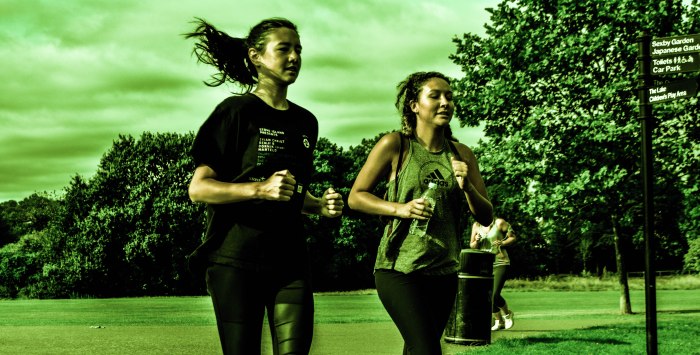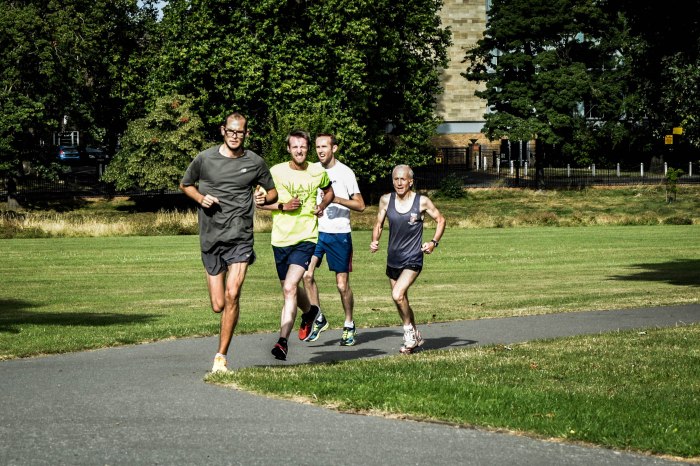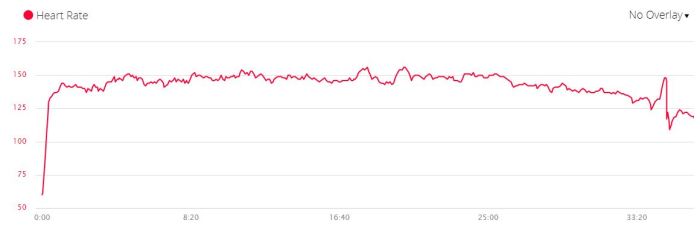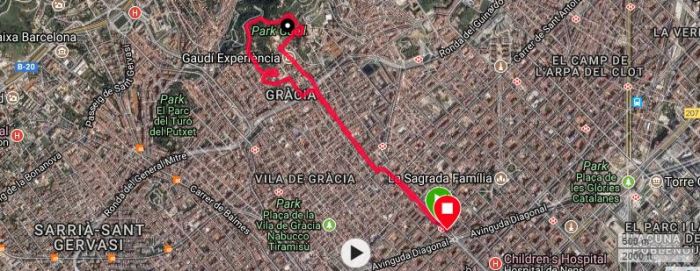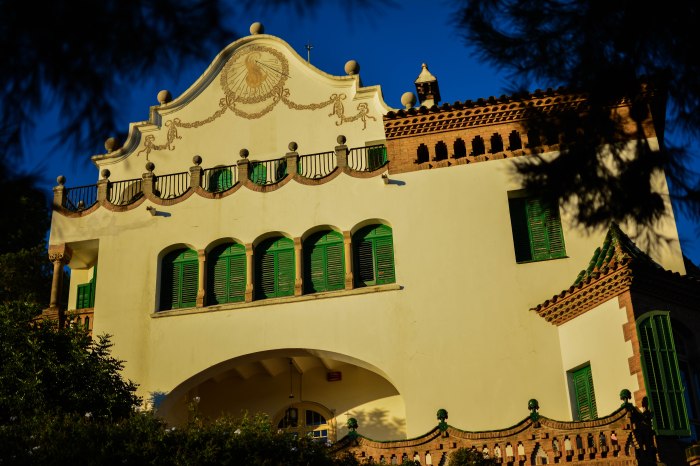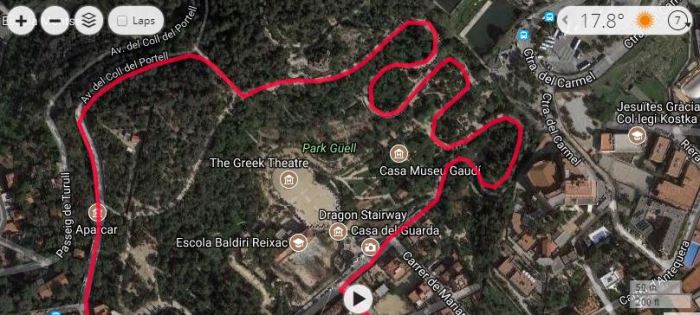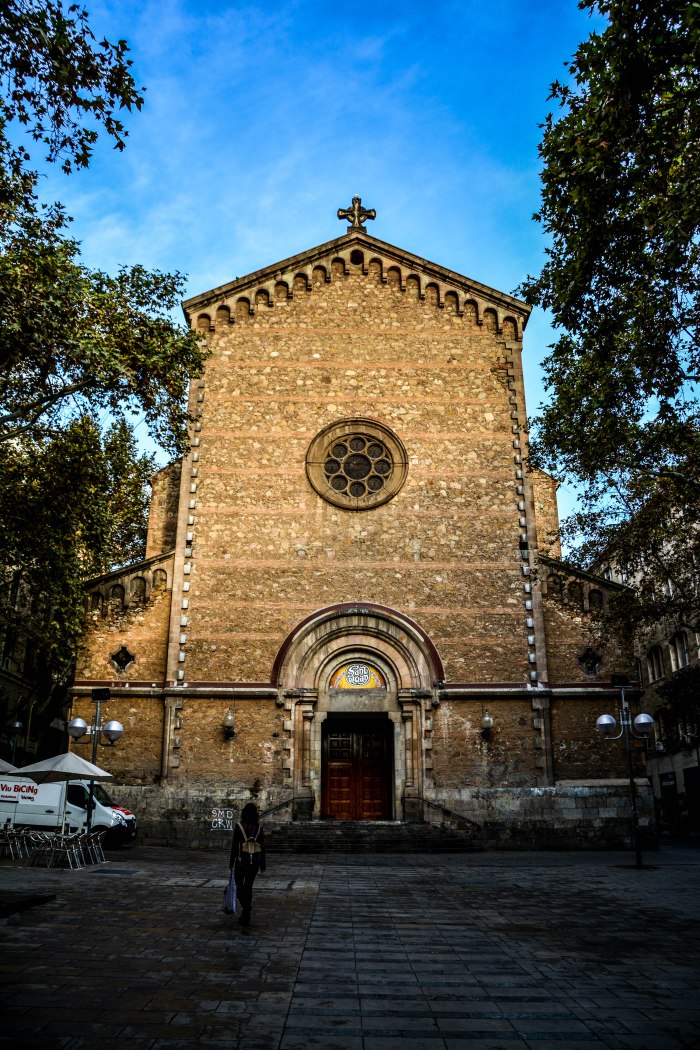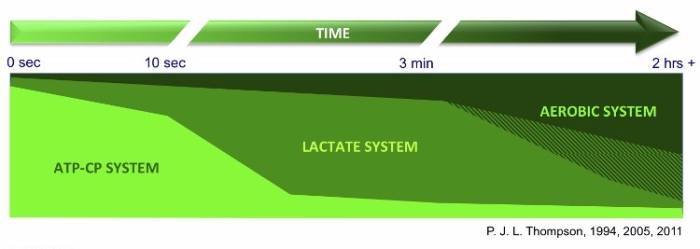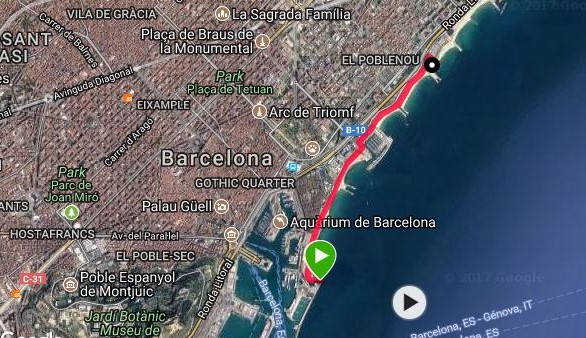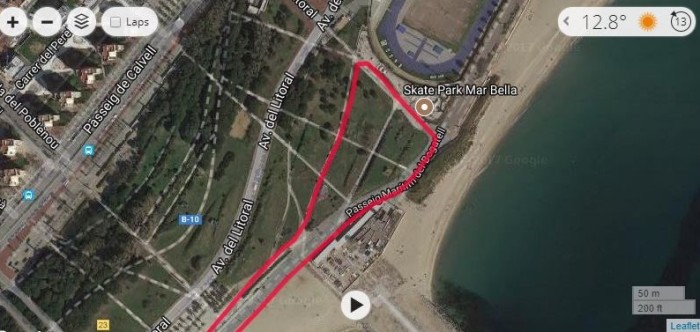- Run type: hilly, paved loop
- Location: Montjuic, southwest Barcelona
- Distance: medium (5.5 miles / 9km approx)
- Starting point: Parc de Bombers de Montjuïc (Montjuic Fire Station)
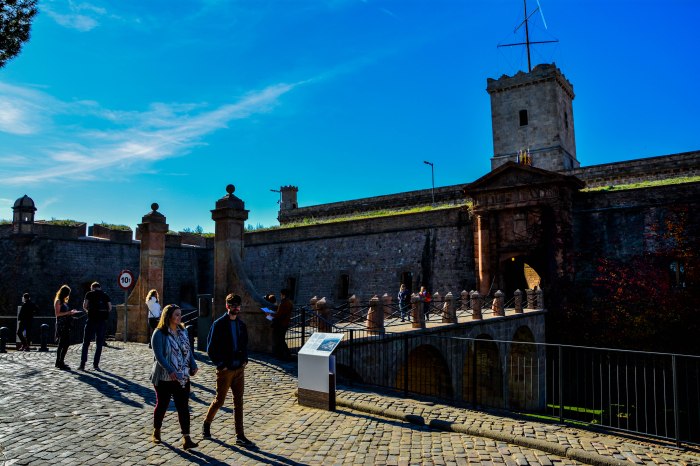
We’re back with the third instalment of Run Barca’s guide to the best running routes in Barcelona. First up, we hit the beach. Next we took a trip up to Gaudi’s Park Güell.
This time, we’ll be taking in the spectacular views of Barcelona’s thriving port from atop of Montjuic. As well as climbing nearly 180 metres on the way to the summit, we’ll be running around the walls of an 18th Century castle, past a restored Art Deco hotel, and skirting past Barcelona’s Olympic Stadium as we wind our way up (and then back down) though Montjuic’s wooded hillsides.
This run might well be our favourite route in all of Barcelona, but one thing it’s not is easy. The course elevation starts off at close to sea level but by the time you reach Castell de Montjuic at the top of the hill, you’ll have hit the 600ft (180m) mark after 3.5km (2.2 miles) of pretty relentless climbing. But as every runner will tell you, the most challenging runs are often the most rewarding and this particular route is no exception. We’re sure you’ll come to love it just as much as us!
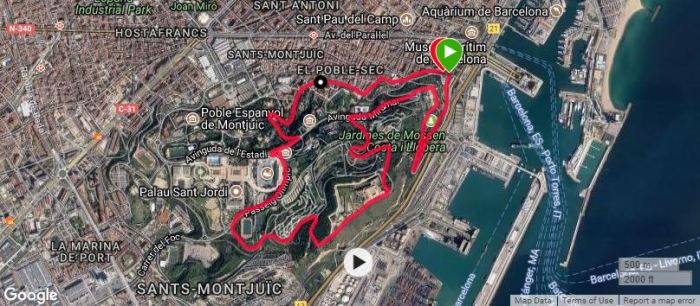
Montjuic
Montjuic is said to mean, literally, “Jewish Mountain” – and indeed the remains of a medieval Hebrew cemetery have been found on the hill – although others suggest that its name derives from the Latin mons jovicus meaning “Hill of Jove”. Either way, there’s plenty of history in this here hill. Located to the southwest of Barcelona, Montjuic enjoys commanding views of both the harbour and city, and for that reason it has been a strategically important site for centuries.
While the current fort – Castell de Montjuic – which sits at the hill’s peak was built in the late 18th Century, a number of earlier fortified settlements pre-date it. Captured by the British during the Spanish War of Succession in 1705 and by the French during the Napoleonic Wars, the castle was held by both the Republicans and Nationalists during the ebb and flow of the Spanish Civil War and was the site of Catalan nationalist leader Lluís Companys’ execution in 1940 on General Franco’s orders.
Today you can visit the castle for €5 and enjoy 360º views of Barcelona from the viewing platform inside the grounds.
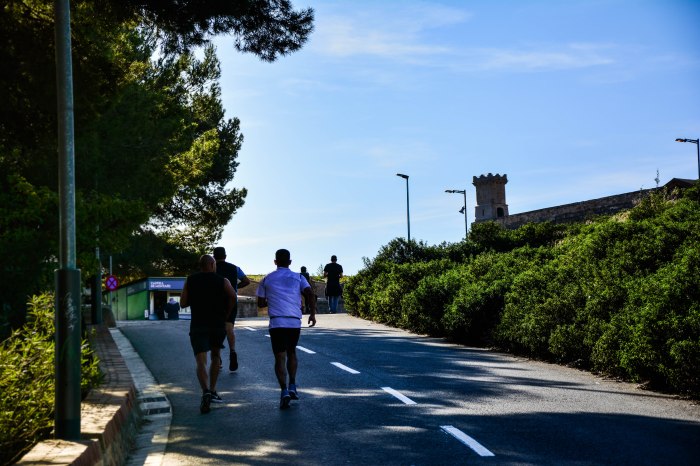
But enough history… Let’s get on with this run.
The Route
Our starting point for this run is the Fire Station at the bottom of Montjuic’s eastern side, nearest the harbour, just a short hop along from the Maritime Museum and the Columbus Monument. Turning off of Passeig de Montjuic, you’re going to take a left up the pedestrianised Passatges de les Bateries, whose name pays homage to the many gun emplacements littering the hillside. From the get go, you’ll be running up hill, albeit only gently at this stage, and before long the pedestrianised road turns to a set of gravelled paths through the charming Jardines de Mossen Costa i Llobera – a landscaped garden specialising in cacti of all shapes and sizes. Luckily, the neatly kept walkways are wide enough not to run the risk of running into something sharp and prickly so fear not…
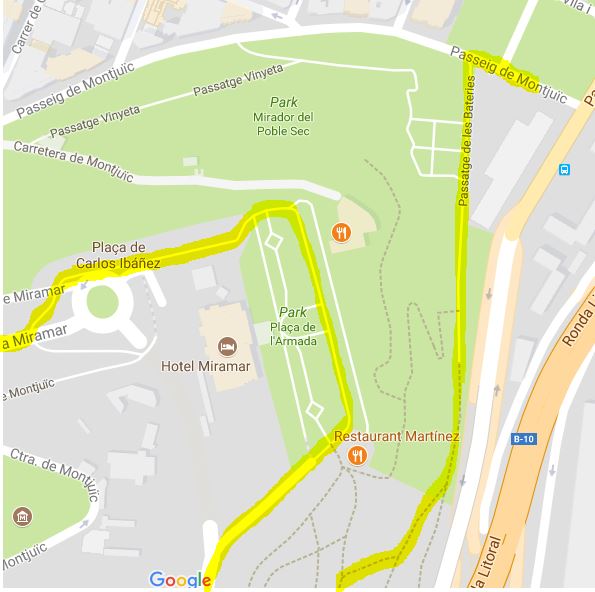
Keep running up hill and bear right (avoid going up any steps, however, as there are step-free routes through the park) until you hit the exit at the garden’s southwest side where you’ll meet a road named the Carretera de Miramar, one of the main routes by car up Montjuic. Here you’ll turn back upon yourself to your right, continuing to run up hill on the pavement at the side of the road.
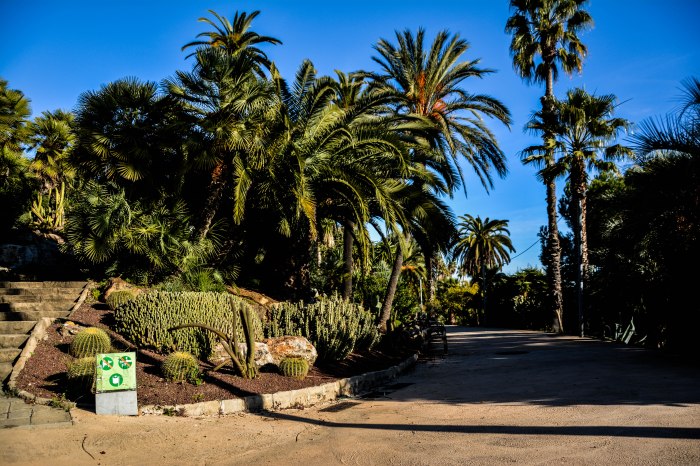
At the top you’ll see a tunnel: here you should bear right before the road disappears through the tunnel. You’ll run past the Restaurant Martinez on your right and into the plaza in which the Hotel Miramar is set.
At this point your legs will get some brief respite from climbing as the ground levels out as you cross the square in front of the Miramar. To your right you have a great vantage point from which to survey the harbour. The plaza serves as the destination for the cable car which runs to and from Barceloneta beach. While it’s possible to catch a cable car to the top of Montjuic, this is actually a totally separate system to the one that stops here. There’s no way to catch a cable car from the beach all the way to the top – and there’s a fair distance between the two cable car systems.
To your left is the restored 5 Star Hotel Miramar which preserves the facade of the 1929 palace which was built on Montjuic as part of the International Exposition of the same year. The hotel combines the historic facade with some pretty nifty modern architecture. It’s also a great location to sit and have a coffee in style while enjoying the views over the city. But that’s for another day – we’ve got more climbing to do…!
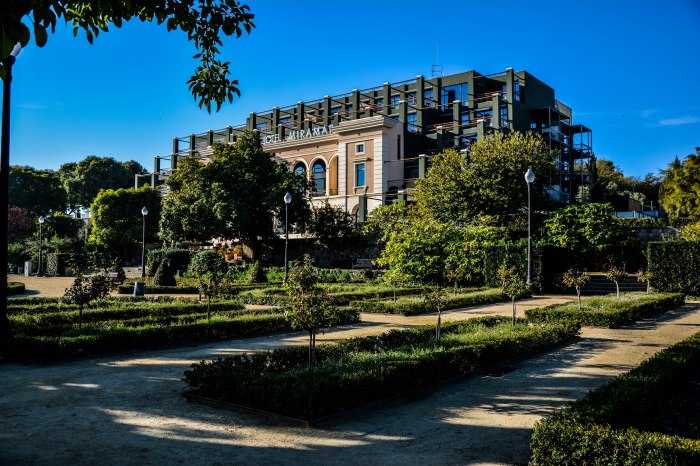
Run around the perimeter of the square and turn left as the gradient picks up again into a gentle incline. To your right, you’ll have views overlooking the Poble-Sec district to the north. Keep running along the paved area and after a few metres you’ll get see a road coming uphill towards you. Cross over at the crossing and follow the Avinguda Miramar as the gradient picks up again. While we’ve included plenty of maps in this blog post, the golden rule is: if in doubt, choose the path that heads uphill…
At the top of the Avinguda Miramar you’ll reach the Montjuic Municipal Swimming Pool, another of the sites built for the 1929 International Exposition, but probably better known for hosting the Olympic diving and water polo in 1992. Surrounded by rows and rows of seating, the pool is now a little rundown from its Olympic heyday, but you can pay to swim here for the bargain price of €6.50 for the day and pretend you’re going for Olympic glory as you paddle around gently (or is that just me?). ‘Amazing’ is an overused word, but the views from the pool are out of this world and amazing certainly fits the bill in this case. For the meantime, however, you’ll have to take our word for it because, from the road along which you’ll be running, the views are fenced off.
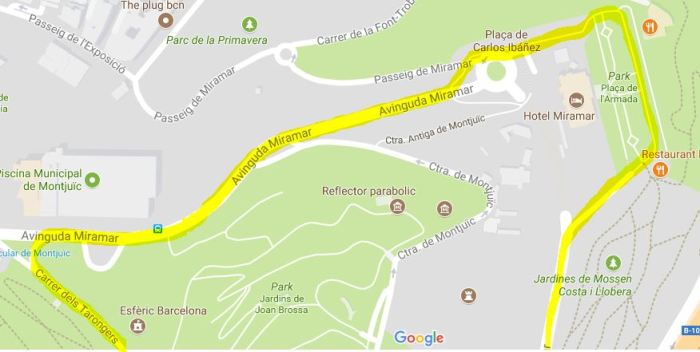
Once you’ve passed the Municipal Pool on your right, you’ll see the Funicular Railway up ahead which ferries passengers up from the Paral·lel Metro Station and links to the second of Montjuic’s two cable car systems. By this point, you’ll be almost half way up the hill and you’ll have hit the 80m (262ft) mark. Your heart should also be pumping pretty hard by now and the lactate will be starting to build up in your legs but, like we said earlier, if it was easy it wouldn’t be as much fun, right?
Before you get to the Funicular Railway, turn left and up the hill, passing underneath the cable cars as they cruise on up towards the summit. You might want to tell yourself that, while riding the cable car might be a hell of a lot easier, you’re at least saving yourself a few euros and getting yourself a great workout to boot.
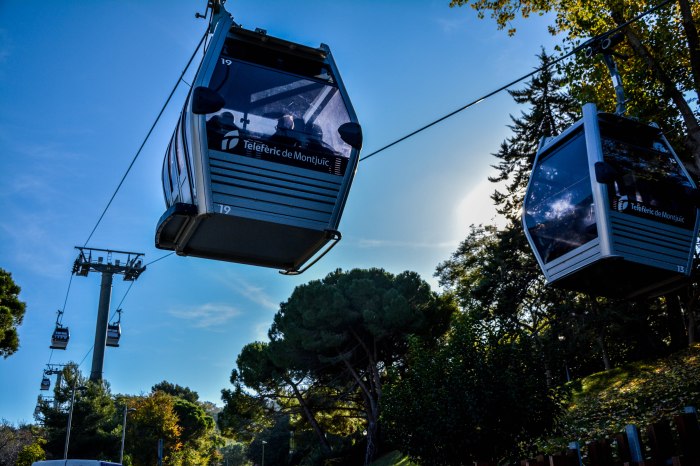
From here, just keep climbing. The incline gets a little steeper as the road winds around to the right and the final push to the castle underneath the cable car lines is probably the steepest part of the climb. They’re are a few different paths you could take to the top but just keeping going upwards and you’ll hit the castle one way or another. And when you do, you’ll have climbed to about 180m (600ft approx.) as the course profile we clocked shows:

At the top, you’re rewarded with some fantastic views down over Barcelona’s busy shipping port. From way up high, the multi-coloured shipping containers look a bit like Lego bricks as they shine in the sun. Run past the main entrance to the castle on your right and you’ll see a few large gun emplacements. A few steps lead down to a gravel path that skirts along between the castle’s perimeter and Montjuic’s steep south-eastern side. Turn to your right and head along the trail that runs in the shadow of the castle’s walls. Keep heading along the path going straight on until it widens up into a more open area that meets the road and hit the tarmac again.
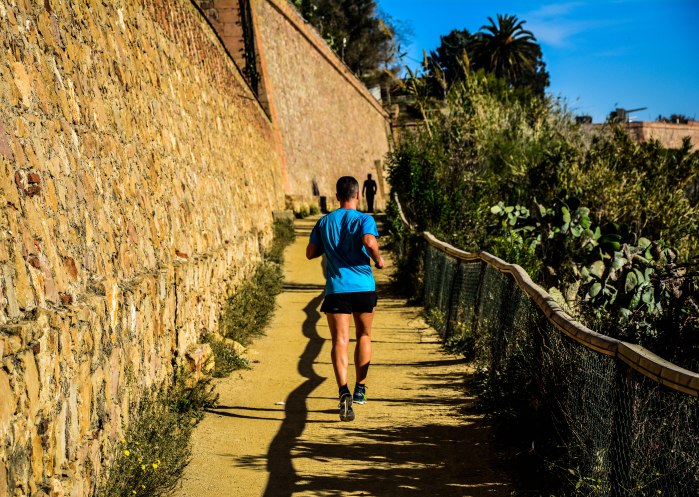
Keep following the road down hill bearing to your left. Most of the hard work has been done by this stage and your legs, heart and lungs can take it easy as you wind your way back down the mountain. We say ‘most’ of the hard work because eventually you reach a junction where you’ll need to turn right and head back up hill for a few minutes. Take the road that runs alongside the Olympic Stadium to your left as the route starts to run back down hill again and then take a right at the next junction onto Avinguda de l’Estadi.
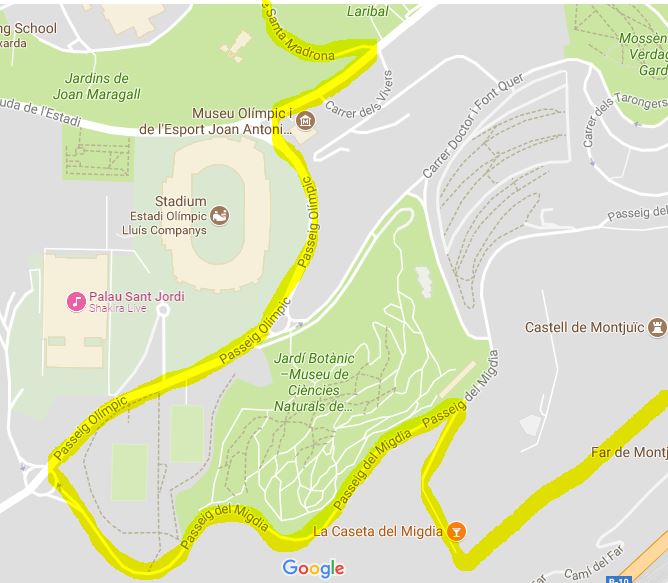
Hook a left down onto Passeig de Santa Madrona and then take your first right onto Passeig de l’Exposicio. Keep following the road as it hugs the side of Montjuic and eventually you’ll arrive back at the fire station where you started. You’ll have 5.5 miles (almost 9km) on the clock and you’ll have had a great workout. All in all, we clocked the total elevation gain at a cool 237 metres (777 feet), the vast majority of that recorded in the first half of the course. And much like the graffiti daubed on the side of one of the old gun batteries, we think that after all that climbing you’ll have good reason to feel ‘PROUD’ of yourselves:

Check out the rest of our snaps and let us know what you think of the route by leaving us a reply below.
Need help with your training? Book a training session with Run Barca.















